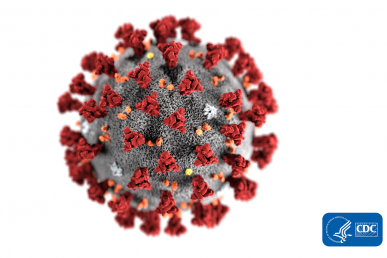New research builds COVID-19 predictive models

One of the toughest mysteries to crack during the COVID-19 pandemic is why certain patients develop severe illness when contracting COVID-19. The risks of some comorbidities have been well-established, but trends among generally healthy populations remain elusive.
A new research project led by Dr. Andrew Trotter, MPH in Community Health Sciences ’10, assistant professor of clinical medicine at the UIC College of Medicine and an infectious diseases physician with UI Health, seeks to build machine learning applications to model and predict clinical staging of COVID-19 patients and better understand how to predict severity of COVID-19 disease. The project is funded by a COVID-19 Rapid Response Pilot Grant from the UIC Center for Clinical and Translational Sciences.
Another component of the project is creating models to predict health resource demands and allocation on a health system level.
“It’s so important for public health authorities to understand how to allocate and anticipate allocation of resources,” Trotter said. “Right now, those decisions are made based on real-time data, but predictive models are still evolving.”
One of the project’s main goals is to build a prediction model for when a person with COVID-19 comes to the emergency department or is admitted to the hospital. The data set will build on outcomes for previously admitted patients, including emergency room treatments, intubation, ventilation and mortality and survival rates. The algorithm includes lab tests and exam findings, as well as extracted data from clinical notes.
The aim is for models to assist clinicians, hospital leadership and public health officials at both the micro and macro level. For individual patients, the model could advise on steps for treatment. At the system level, an algorithm could predict outcomes for emergency room visits or recommend placement in ICU care or within the general population.
Trotter stresses this type of model is built to allow for clinical experts to intervene. When doctors or nurses step in to address low oxygen levels or a particular symptom, that feedback actually assists the algorithm in making better decisions down the road.
One of the key challenges of the project is data validation; faculty from the UIC College of Engineering are using natural language processing to turn doctor’s notes into data points, but there may be variability in how clinicians record and document findings.
The project team is also attempting to develop a radiology component. Artificial intelligence can examine the raw images of X-rays and CT scans to predict outcomes and distinguish between COVID-19 and bacterial pneumonia, for example.
“Objective data like lab tests and blood pressure measurements, sometimes they can be easier to interpret,” Trotter said. “We’re interested in symptomatology, exposure from travel and other things captured only in text. The validation process allows us to compare medical records with what we’re getting out of data extraction.”
Trotter said the multidisciplinary nature of the project team is unique to the creation of a clinical model like this. With colleagues from the UIC Colleges of Medicine, Engineering, Applied Health Sciences and the University of Illinois at Urbana-Champaign along with informatics specialists from the Office of the Chief Health Information Officer at UI Health, Trotter said the project is well-suited to address the particular health needs of the communities served by UI Health.
“We need to make sure we have models and evidence that applies to every population,” Trotter said. “We have the opportunity here to create predictive models that are not just unique to the communities we serve at UIC but for underserved areas across the U.S.”
